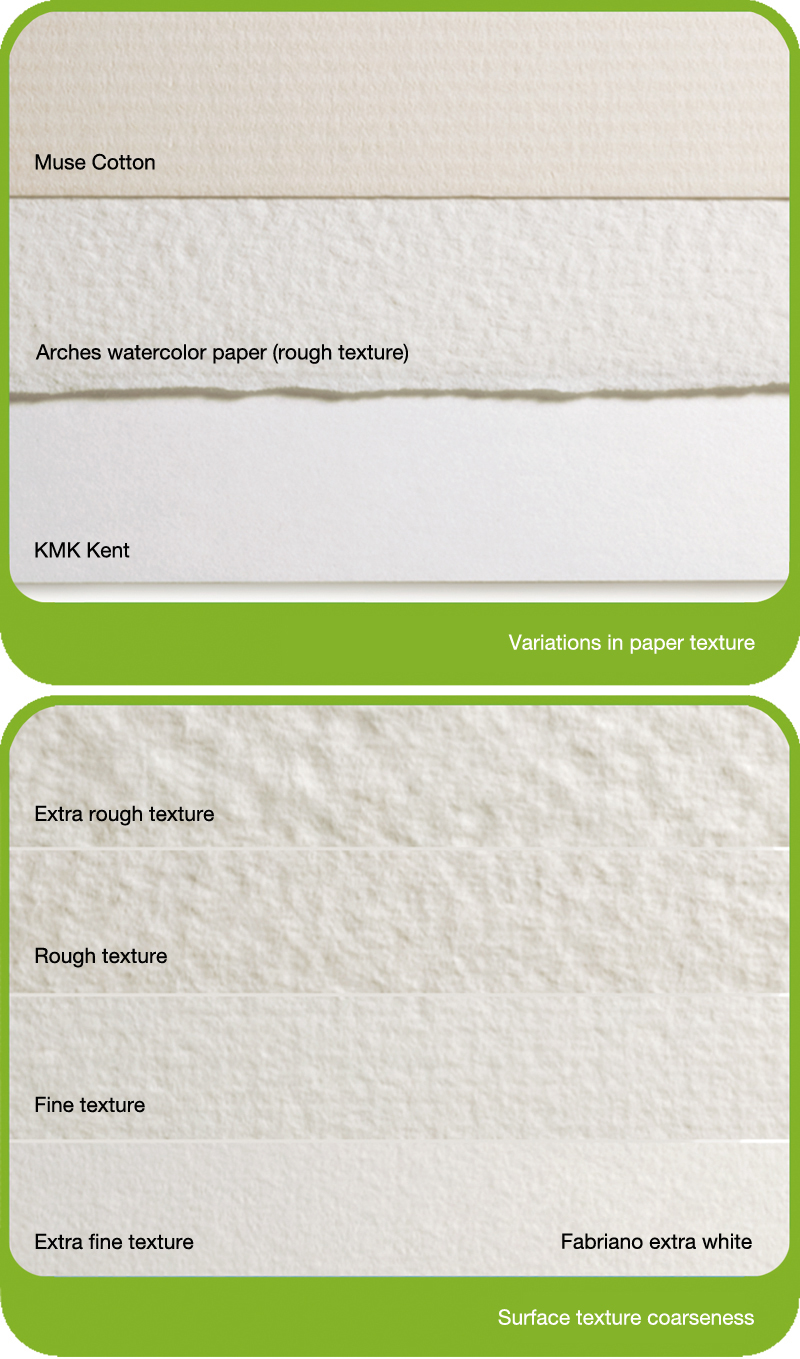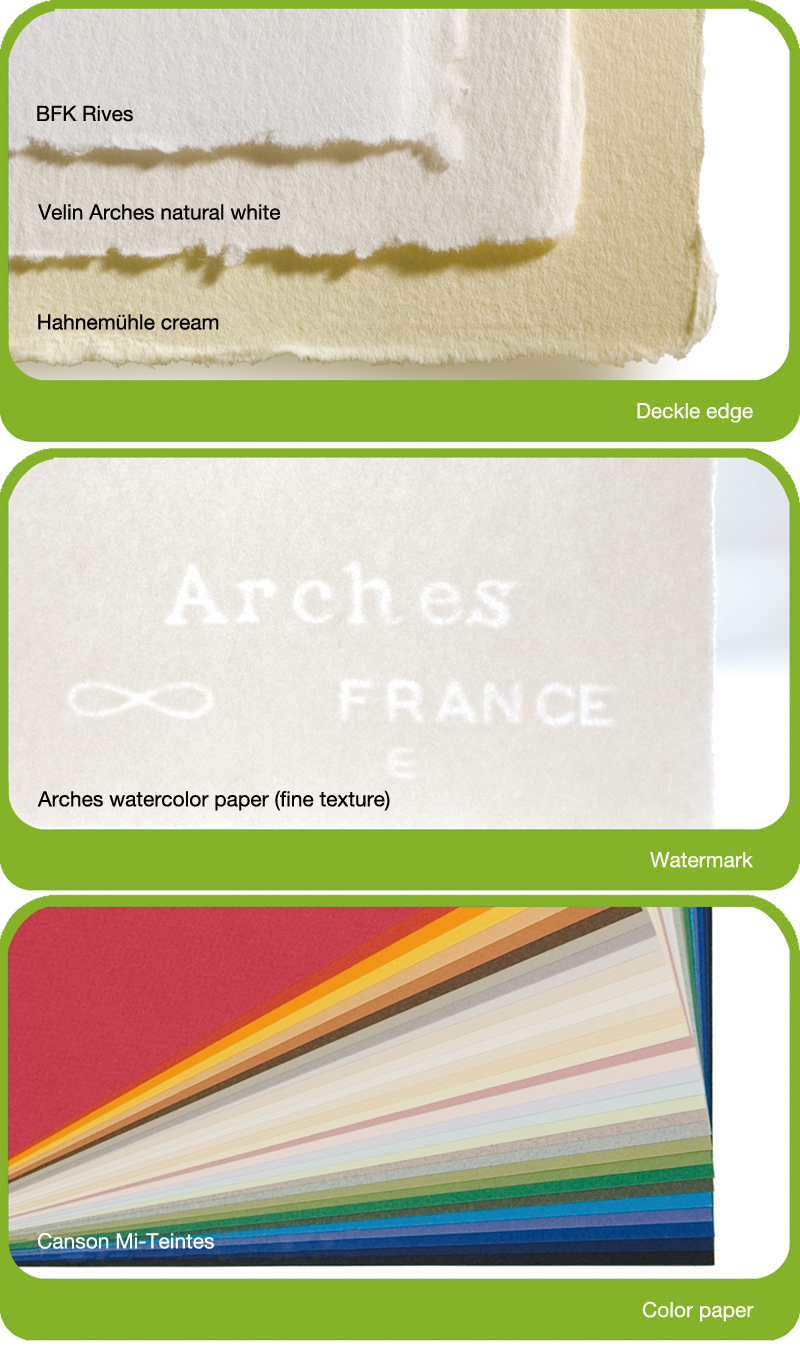Yoshi (Western Paper)
洋紙
Youshi
CATEGORIES
The term yoshi refers to paper that was introduced or imported from the West, as opposed to washi which refers to paper made domestically in Japan. Yoshi is also a general term for machine-made paper. The majority of drawing paper, Kent paper, watercolor paper, charcoal paper and printmaking paper used in art is yoshi, and these are used for creating a variety of expressions.
The main ingredients of yoshi include wood pulp, which is relatively cheap and easy to obtain, as well as non-wood pulp such as cotton, flax and esparto. In particular, paper made entirely of cotton is used as quality printmaking and watercolor paper. Many types of yoshi are sized to prevent ink from smudging. In the past, the sizing agents used were acidic. This damaged the fibers, causing the paper to deteriorate in less than a hundred years. Nowadays, improvements have been made and the agents used are alkalescent or neutral. The surface of yoshi paper is often textured into stripes and honeycomb shapes for various uses. There are also coarse, medium and fine grain paper for differing effects. Differences in the surface of imported paper are often described as “rough” (coarse grain: no surface treatment), “cold pressed” or “NOT” (medium grain: pressed smooth to some degree on metal plates), and “hot-pressed” (fine grain: pressed smooth on heated metal plates). In addition to these, some yoshi paper has a deckle edge, which refers to the irregular untrimmed edge of the paper, or a watermark, which is a translucent design or logo, and is available in various colors thanks to the use of dyes and pigments.
Regarding the history of yoshi, the process of making paper by hand was perfected by Cai Lun, a Chinese official of the Eastern Han Dynasty, and this made its way through the Korean Peninsula to Japan. At the same time, the technique propagated through Central Asia and the Middle East, and into Europe. By the 13th and 14th century, the paper industry flourished in places such as Fabriano in Italy and Arches in France. Paper at the time was produced using hemp and rags chopped finely into small pieces, but by the 19th century, groundwood pulp and chemical pulp came to be used with advances in machine papermaking technologies for mass production. In Japan, demand for paper grew in the course of modernization in the Meiji era, and imports from the West increased. It was at this time that paper imported from the West became known as Western paper or yoshi in contrast to domestically made washi paper. Machine papermaking techniques were also introduced into the country and domestic production of yoshi got underway. Today, with the spread of this papermaking process, yoshi is used widely in everyday uses.


